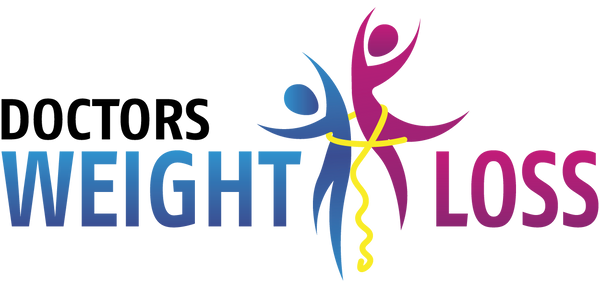Odds are you have probably heard of the wildly popular ketogenic diet (also know as keto) since so many people have success with the protocol. I'm probably asked this question about its efficacy and safety at least three times per week so I thought I would explore the different nuances of this fascinating nutrition plan. The general idea of the Keto Diet is to remain extremely low in carbohydrates while consuming an extremely high percentage of fat, so your body can be put into a metabolic state of ketosis. This state of ketosis causes your body to become efficient in burning fat (instead of carbohydrates) for energy. Generally speaking, to achieve ketosis, one must consume around 75 percent fat, 20 percent protein, and only five percent carbohydrates. You may not be aware that there are several ways people approach the keto diet which are explained below.
- Standard Ketogenic Diet (SKD):Presumably the most popular form of keto, it typically calls for seventy-five percent fat, twenty percent protein, and only five percent carbohydrates. SKD is extremely low in carbohydrates (calling for less than fifty grams of carbohydrates per day), and is high in fat, while moderate in protein.
- “Dirty” Keto Diet: One of the newer and fairly common keto trends, “dirty keto” follows the same macro-nutrient protocol (seventy-five percent fat, twenty percent protein, and five percent carbohydrates) but it doesn’t matter what foods those macros come from. Technically, one can eat unlimited amounts of bun-less fast food burgers, pork rinds, and bacon as long as those macros are in alignment.
- “Lazy” Keto Diet: This version of keto doesn’t call for tracking the amounts of protein and fat one consumes, however, the “lazy keto” dieter does track carbohydrates with the intention of remaining as low asunder twenty grams per day.
- Cyclical ketogenic diet (CKD): This form of keto involves short periods of higher-carbohydrate intake, such as six standard ketogenic days followed by one high-carbohydrate day, also known as a “re-feed” day. The re-feed day consists of roughly 150 grams of carbohydrates.
- Targeted ketogenic diet (TKD): Specifically for high-intensity athletes and body builders, this version of Keto is very similar to the SKD, however, it focuses on adding in the daily allotted carbohydrates around workout times for added energy.
- High-protein ketogenic diet: Similar to the Standard Ketogenic Diet, it includes a slightly lower amount of fat, with more protein and the same amount of carbohydrates. The ratio is often sixty percent fat, thirty-five percent protein and five percent carbohydrates.
So, does this diet work? The short answer is yes, it can. The basis of the keto diet in terms of weight loss is that if you do not feed the body glucose (sugar) obtained through carbohydrates which is the primary source of energy for the body’s cells, an alternative fuel is produced from stored fat, and that fuel is referred to as “ketones.” When very small amounts of carbohydrates are consumed, the body first takes stored glucose from the liver, and only temporarily breaks down muscles. If this processes continues for three to five days and the stored glucose gets completely depleted, insulin levels decrease, and the body starts to use fat as fuel. This results in the liver producing ketone bodies from fat, which can be used for energy in place of glucose. Numerous studies have shown the keto diet to assist with weight loss and blood sugar level improvements, however, the exact reasons as to why the Keto diet can produce weight loss and blood sugar improvement results is still up for debate. Some research-based theories are as follows:
- Food cravings are lowered due to the satiety of consuming high-fat foods
- Appetite-stimulating hormones such as insulin and ghrelin are decreased when low amounts of carbohydrates are consumed
- Ketone bodies (which are the main source of fuel) reduce the feeling of hunger
- Increased calorie burning resulting from metabolic effects of obtaining glucose from fat and protein conversion
- Decreased insulin levels resulting in promotion of fat loss, as opposed to lean body mass loss.
In addition to its efficacy, I am constantly asked if keto is safe. It can be safe if done is a very meticulous manner. Referring back to the different types of keto, "dirty keto" is quite popular and can be detrimental to one's health due to excessive inferior fat intake, as well as sodium. Consuming too many bad fats along with salt can lead to host of issues including high blood pressure, increased bad cholesterol, and heart disease. The "dirty keto" foods that are consumed by many include items such as hot dogs, deli meats, pork rinds, and fast food bun-less burgers.
If one follows a clean keto nutrition plan, he or she can achieve weight loss, as well as improved blood sugar and cholesterol levels. The difficult part is sticking to only the healthiest fats and it's a bit of a short list. If you do attempt the ketogenic regimen, make sure your fats come from foods like wild salmon, nuts, seeds, olives, avocado, olive oil, shellfish, grass-fed meats, and wild game.
One of the primary reasons as to why the ketogenic protocol is effective for weight loss is because it is extremely low in sugar and carbohydrates. Fat contains zero carbs and sugars so when one's nutrition plan is 75 percent zero sugar and carbs, weight loss and blood sugar levels will naturally improve. At Doctor's Weight Loss, we employ this evidence-based practice of low carbohydrates and sugar in all of our medical grade weight loss products, so you can achieve the same results without having to eat so much fat!







